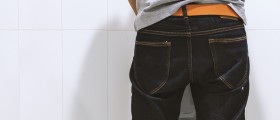TURP
Enlarge prostate will require a procedure called TURP. A condition called benign prostatic obstruction or benign prostatic hypertrophy occurs when prostate cells overgrow, causing urine flow blockage. This produces certain problems, which include urine passing troubles.
The treatment will use medications in the beginning, but there is a chance that they will be ineffective, and in these cases, surgery has to be performed. Several procedures can be done as substitutes for TURP. Those are open prostatectomy, laser vaporization, electrovaporisation, microwave therapy, and transurethral incision of the prostate.

Procedure
Smoking will be prohibited before the surgery, and a stay of four days will be needed in the hospital. The procedure can be done under local or general anesthesia. Your doctor and you will discuss and see which one is the best solution. During the general, you are asleep, while during local, you are awake, but you do not feel anything from the waist down.
Before the surgery diet will be needed, you will have to sign a consent form and will have to wear compression stockings to reduce the risks of blood clotting in the veins of the legs. An endoscope is used during this operation, which lasts for an hour and a half. This instrument looks like a tube with a camera on the top.
Insertion of the endoscope is done through the urethra, and then the enlarged prostate is cut out with the use of instruments. The catheter is used after the surgery. Pain will be felt during the time needed for the wearing out of the anesthesia. Sometimes, the urine can have a foul smell, but the clear urine suggests the removal of the catheter. Walking is preferred during the recovery, which lasts for four days.
Recovery and Side Effects
For the pain, you can use painkillers like ibuprofen. Drink a lot of fluid, but avoid alcohol. Driving will have to be eliminated for six weeks following the surgery. This period is considered to be the recovery time needed for TURP.
However, this generally safe procedure has some side effects and risks, and those are feelings of sickness, blood found in the semen or the blood, impotence, urgent need to pass urine, and retrograde ejaculation. The last condition mentioned is connected with the problem when semen is ejaculated into the bloodstream instead of through the penis.
Infection can happen, and it produces a foul smell of urine, pain while urinating, and fever. Reaction to the anesthetic, abnormal bleeding, blood clots, as well as complications such as procedure repeating (due to prostate repeated enlargement), infection, or TURP syndrome can occur. During the procedure, fluid will flush your bladder, and if this fluid is absorbed into the body, TURP syndrome is created.
- This study aimed to explore differences of clinical efficacy, surgical features, and complications between transurethral resection of the prostate (TURP) and plasmakinetic enucleation of the prostate (PKEP) for BPH.
- A total of eligible 850 cases of BPH underwent TURP (the TURP group, 320 cases) or PKEP (the PKEP group, 530 cases) in the urology department of our hospital from March 2015 to 2018 were involved in this study. Then, the baseline data, surgical characteristics, IPSS, QoL, PVR, Qmax, IIEF-5, and documented complications were compared between the two groups.
- The operative time, intraoperative irrigation volume, postoperative hemoglobin, decrease in hemoglobin, postoperative irrigation time and volume, catheterization time, and hospital stay of the PKEP group were significantly less than those of the TURP group (all P?0.05). At 3 months, 1, 2, and 3 years after operation, no significant differences were observed in IPSS, QoL, PVR, but the results of Qmax and IIEF-5 in the PKEP group were significantly higher than those parameters in the TURP group (all P?0.05).
- The incidences of massive blood loss, postoperative secondary bleeding, blood transfusion, capsular perforation, urinary tract irritation, bladder spasm, clot retention, urinary tract infection, transient incontinence, erectile dysfunction, and the incidences of II, III grade of Clavien–Dindo classification in the PKEP group were significantly lower than those of the TURP group (all P?0.05).

















Your thoughts on this
Loading...